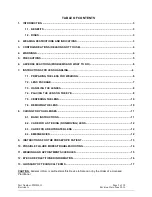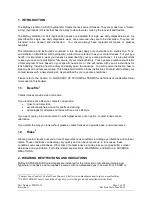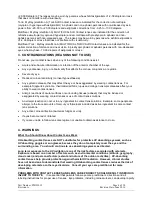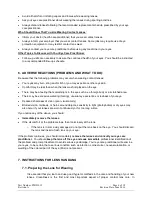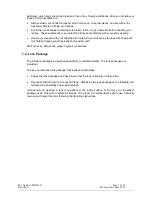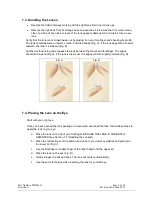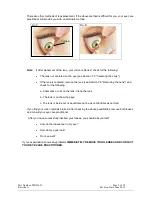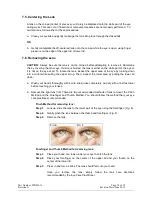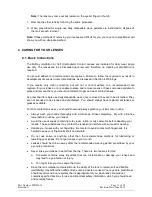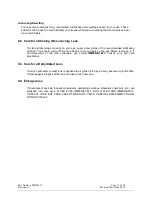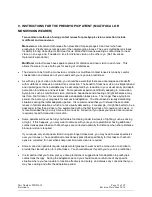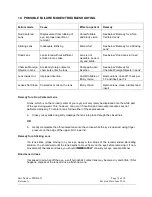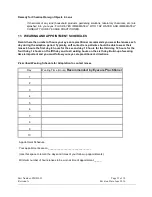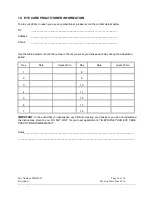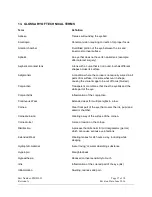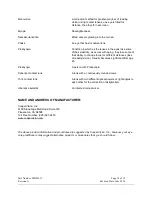
Part Number: PIB01012
Page 4 of 18
Revision A
Revision Date: June 2016
+20.00D diopters. The lenses may be worn by persons who exhibit astigmatism of -2.00 diopters or less
that does not interfere with visual acuity.
Toric: MyDay (stenfilcon A) Toric Soft Contact lenses are indicated for the correction of ametropia
(myopia or hyperopia with astigmatism) in aphakic and non-aphakic persons with non-diseased eyes in
powers from -20.00 to +20.00 diopters and astigmatic corrections from -0.25 to -10.00 diopters.
Multifocal: MyDay (stenfilcon A) MULTIFOCAL Soft Contact lenses are indicated for the correction of
refractive ametropia (myopia and hyperopia) and emmetropia with presbyopia in aphakic and non-
aphakic persons with non-diseased eyes. The lenses may be worn by persons who exhibit astigmatism
of -2.00 diopters or less that does not interfere with visual acuity.
Multifocal Toric: MyDay (stenfilcon A) MULTIFOCAL TORIC Soft Contact lenses are indicated for the
optical correction of distance and near vision in presbyopic phakic or aphakic persons with non-dieseased
eyes who may have -10.00 diopters of astigmatism or less.
3. CONTRAINDICATIONS (REASONS NOT TO USE)
Do not use your contact lenses when any of the following conditions exist:
•
Acute and subacute inflammation or infection of the anterior chamber of the eye.
•
Any eye disease, injury, or abnormality that affects the cornea, conjunctiva, or eyelids.
•
Severe dry eye.
•
Reduced corneal sensitivity (corneal hypoesthaesia).
•
Any systemic disease that may affect the eye or be exaggerated by wearing contact lenses. For
example Sjogren's syndrome, rheumatoid arthritis, lupus and collagen vascular diseases affect your
ability to wear contact lenses.
•
Allergic reactions of ocular surfaces or surrounding tissues (adnexa) that may be induced or
exaggerated by wearing contact lenses or use of contact lens solutions.
•
An allergic reaction can occur to any ingredient in contact lens solutions. Example: some people are
allergic to the trace amounts of mercury or thimerosal included as active ingredient in some contact
lens solutions.
•
Any active corneal infection (bacterial, fungal, or viral).
•
If eyes become red or irritated.
•
If you are unable to follow lens care regimen or unable to obtain assistance to do so.
4. WARNINGS
What You Should Know About Contact Lens Wear
:
UV-absorbing contact lenses are NOT substitutes for protective UV absorbing eyewear, such as
UV absorbing goggles or sunglasses because they do not completely cover the eye and the
surrounding area. You should continue to use absorbing eyewear as directed.
Long term exposure to the UV raditation is one of the risk factors associated with cataracts.
Exposure is based on a number of factors such as environmental conditions (altitude, geography,
cloud cover) and personal factors (extent and nature of the outdoor activities). UV-absorbing
contact lenses help provide protection against harmful UV radiation. However, clinical studies
have not been done to demonstrate that wearing UV-absorbing contact lenses reduces the risk of
developing cataracts or other eye disorders. Consult your eye care practitioner for more
information.
PROBLEMS WITH CONTACT LENSES AND LENS CARE PRODUCTS COULD RESULT IN SERIOUS
INJURY TO THE EYE.
It is essential that patients follow eye care practitioner’s directions and all
labeling instructions for proper use of lenses. Eye problems, including corneal ulcers, can develop rapidly


